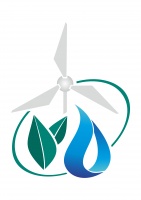Comparison of practices
Selected practice: Improving water use planning technology based on CROPWAT 8.0 Software
Select another one to compare with.
Enhancing water distribution in Water User Associa-tions (WUAs) by way of designing and implementing WUA decade-based water supply scheduled plans broken down by water consumers and days
Кыргызстан, Ошская, Кара-Сууский
Establishment of the Right-Bank Main Canal Water User Union (RMC-WUU)
Кыргызстан, Ошская, Кара-Сууский
Establishment of the Aravan-Akbura Main Canal Water User Union (AAMC-WUU)
Кыргызстан, Ошская, Кара-Сууский
Application of tubular outlet flowmeters
Таджикистан, Хатлонская, Джиликульский
Using low-pressure impulse mist irrigation system for watering agricultural crops
Таджикистан, Районы республиканского подчинения, Рудакинский
Drip irrigation of corn in the Gissar Valley
Таджикистан, Районы республиканского подчинения, Рудакинский
Sprinkling irrigation of alfaalfa in the conditions of Central Tajikistan
Таджикистан, Районы республиканского подчинения, Рудакинский
Using MASSCOTE methodology for express assessment of the condition of Vakhdat municipal irrigation system
Таджикистан, Районы республиканского подчинения, Вахдатский
Showing 11-20 of 48 items.




